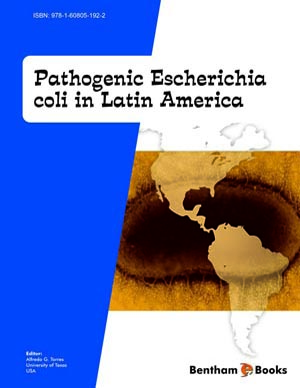Abstract
Enterotoxigenic Escherichia coli (ETEC) have been identified as a major bacterial pathogen responsible for infantile diarrhea in developing nations. ETEC are also the most common bacterial pathogen responsible of acute infectious diarrhea in adults traveling from industrialized nations to less developed countries. After ingestion, ETEC first attaches to epithelial cells lining the small intestine mucosa through an interaction mediated by adhesins known as colonization factor antigens (CFA), ETEC then produce either one or both of the well identified heat-labile (LT) and heat-stable (ST) enterotoxins. The LT of ETEC is structurally and immunologically related to the pentameric V. cholerae enterotoxin while ST is a small, non immunogenic peptide. Polymorphisms in host blood group antigens and the IL-10 gene promoter have been associated with diarrheal disease due to ETEC. The diagnosis of ETEC depends on the identification of the LT and ST toxin by molecular probes or immune based assays. Clinically, diarrhea due to ETEC cannot be differentiated from diarrhea due to other enteropathogens. The correction and maintenance of hydration is essential to prevent dehydration due to ETEC. . Several antimicrobials have demonstrated efficacy to treat ETEC associated travelers’ diarrhea, including Rifaximin, various fluoroquinolones and Azithromycin. Strategies for ETEC vaccines have focused on targeting CFAs of ETEC (CFA/I, CFA/II, and CFA/IV), the immunogenic LT or the use of whole cell killed organisms expressing CFAs.


